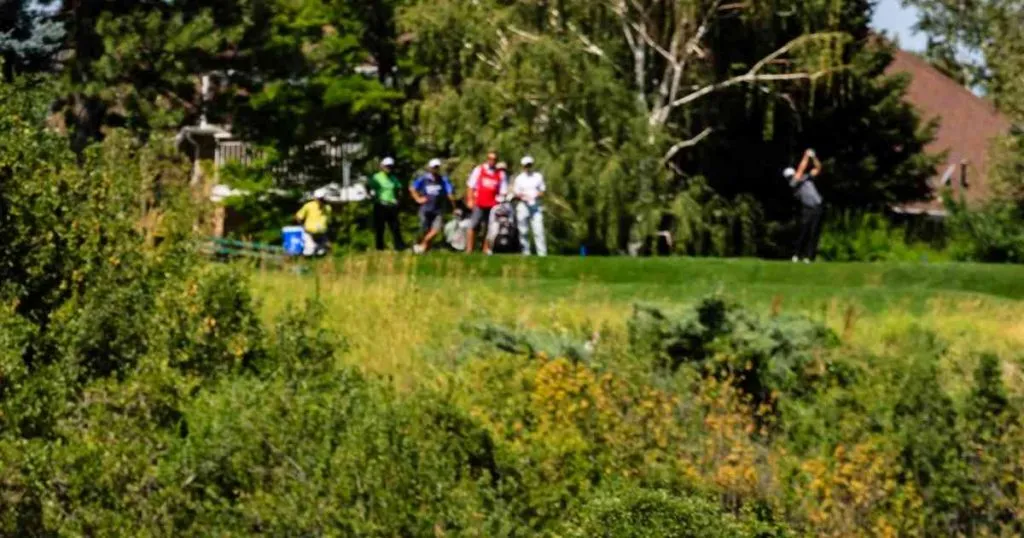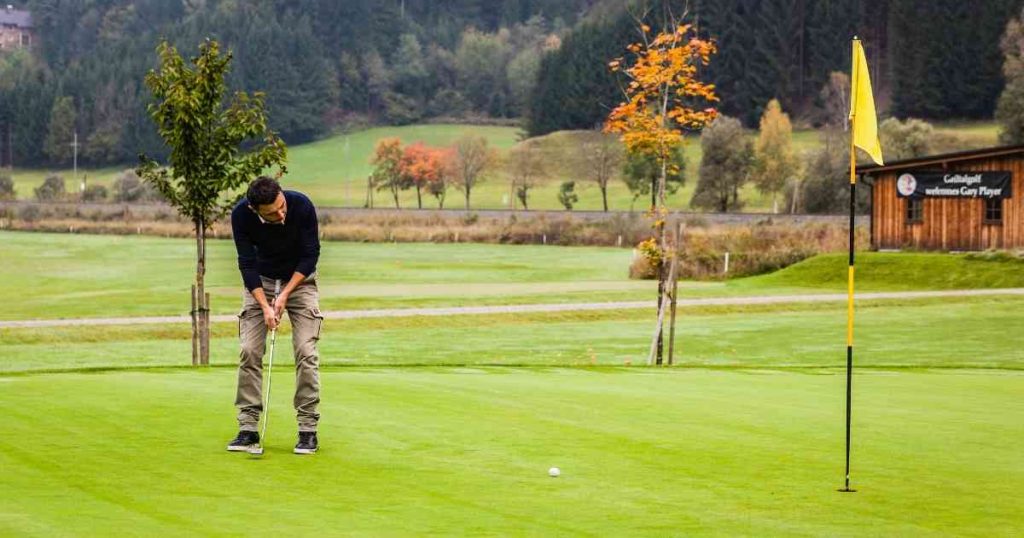Whether you enjoy watching a game of golf or like to hang out around the golf course, you’ve probably come across the term “birdie” before. However, if you are just getting into golf, this is a term you need to learn if you want to understand the game. A birdie is a basic concept in golf and is central to scoring. You don’t want to get on the course and feel confused at these terminologies.
In this article we’ll share what a birdie means in golf, the history of the term, how to score one, and other similar scoring conventions.
What Is a Birdie?

A birdie is one of the scoring terms in golf. A birdie means taking a shot less than the par ascribed to an individual hole. For example, if you played four shots in a par -5, this is a birdie.
This may not make much sense if you are a novice, so we will break it down further. Most holes or pars in a golf course are labeled -3, -4, -5, and -6, and you need to complete each hole with the number the par is labeled. So, a -3 hole requires three shots, -4 requires four shots, and so on. This is called an even-par.
However, when you use only two shots to complete a -3 par, this is called a birdie. Birdies are notorious bragging rights for a golfer.
On the other hand, if you take four shots on a -3 par, it’s referred to as a bogey, and you may need to even out in the next round with a birdie to stay on track. A birdie is also known as a bird, a circle on the score hand, 1-under par, or 1-under.
History of Birdies
Part of what makes golf a great sport is the history tied to the game. Let’s take a quick look to get some historical context on the term “birdie.”
Birdies are said to be named after the 19th century American slang ‘bird,’ which Americans used to describe achievements. If you did something very skillfully, it was called a bird act.
According to the USGA, the Atlantic City Country Club in New Jersey is where this term was first coined. In an interview, golfer Ab Smith recounted the story of playing with his brother, William, and a friend, George Crump of Pine Valley, at the country club. Ab’s second shot almost reached the hole, so he said, ‘that was a bird of a shot.’
The three then bet money on him scoring under par on the par -4 hole – which he did. From that moment in 1903, they all referred to scoring under a par as a birdie. Today, Atlantic City Golf Course has a plaque to commemorate the place and time the name was birthed.
Later in 1911, the Maclean Magazine wrote that a shot was a ‘bird straight down the course, about two hundred and fifteen yards.’ Since then, the term has been used officially in golf tournaments.
Types of Birdies
There are two types of birdies or two ways to record birdies:
Natural/Gross Birdie
This is the regular birdie which means making a par -4 hole in three shots. This is the one golfers often boast about.
Net birdie
A net birdie happens when you rely on a handicap stroke to score. For example, let’s say you are playing in a competition on a par -3 hole and you are entitled to a handicap. If you land your first stroke on the green, get your first putt inches from the hole, then finally make the hole, it will be recorded as a net birdie and a natural par.
Do Double Birdies Exist?
When a person misses a par in two holes more than the par (the opposite of a birdie), this is called a double bogey. So, for example, if it’s a par -5 hole and you have to take seven shots before completing the par, this is called a double bogey. If you have to take eight, it’s called a triple bogey.
You may be wondering if the same happens when a golfer completes a par in two shots less. However, there’s no such thing as a double or triple birdie. Two under on a par is called an eagle, and three under is called an albatross. Both are bird names, so perhaps they are meant to illustrate how “big” the birdie is. These scores all determine the winner at the end of all the rounds.
Are Birdies Hard to Score?
Despite the term’s popularity, scoring a birdie is not common, and it probably won’t happen during your first few games at the course.
Birdies usually happen on a par -5 hole. Most professional golfers shoot far, allowing them to reach par -5 in a couple of shots. They then leverage this to record a birdie on their scorecard with the remaining couple of shots.
Only a few mid handicappers score it, and even high handicappers feel very excited when they do. The average number of birdies made by high handicap golfers per round is five; this is not much compared to the number of times they are putting per round.
On average, tour players make birdies 15-25% of the time, So don’t worry if you don’t score a birdie on your first few games. You should instead manage your expectations and focus on learning to score. Continue to perfect your game and sooner or later you might surprise yourself.
Should You Expect to Score a Birdie?
We all want to learn cool moves but, going by the figures above, scoring a birdie is hardly a skill one can easily pick up. It requires both accurate marksmanship and excellent putting. It is a skill that can take years to develop.
Also, you have to keep your tee shots in play to hit a green in regulation (GIR). So, it’s often better to work on avoiding scores over par (bogeys). If you are aiming at the pin and you miss the short side of the green, then chances are you will get a bogey. This will only hurt your game.
Therefore, it’s best to let it happen naturally unless you are a professional golfer, are aiming to be one, or want to make money from golfing. Practice every once in a while, but don’t put pressure on yourself. Who knows? You might get lucky.
How to Score a Birdie
Birdies may be hard to score, but it never hurts to try. So we will share some key factors that may help you nail this cool move below.
There are two things that you need to score birdies. One is skill, and the other is luck.
Skill
You need a max of two strokes to record a birdie on a par -3. So you need at least one of these shots to be skillfully executed. Remember all you know about putting straight: roll the ball instead of hitting, control your wrist, lead with your left and accelerate through impact. Once you get the good shots in, scoring a birdie becomes easier.
Luck
There’s a reason even the pros struggle with birdies, and that’s due to luck. Lucky bounces happen – although golfers rarely witness them because of the distance, elevation, or trees that obstruct their views.
You can’t depend on luck for the game, but you can’t out rule it either. In the words of Gary Player, ‘the more I practice, the luckier I get.’
Some hacks will help you learn birdies conveniently. Pro golfers will try to leverage a number of these hacks in order to increase their success rates. Here are some tips that can help you score a birdie:
- Use golf clubs that you are familiar with, a good one will keep you in control and help you to gain striking power.
- Start by trying to hit long and straight shots. Distance in your first few shots will go a long way in giving you time to focus on making a birdie.
- Use putters that allow you to maneuver the green easily.
- Summon the courage, but don’t apply pressure. Try to take the shots without tensing up.
- Practice constantly, especially when you are on your own and don’t need to impress anyone.
Birdies in the PGA TOUR

In the 2021 season, the PGA TOUR birdie average in a round was 3.82. This figure is partly due to the rough nature of the golf courses professional games take place on.
The record for the most birdies in an 18-hole round on tour is 13.
Jim Furyk has the lowest recorded score from the 2016 Connecticut TPC River Highlands.
A pretty memorable feat was when David Duval scored 11 birdies in seventeen gold holes. He then finished with an eagle on the eighteenth hole. This made him win the leading player whom he was seven shots behind by one score.
For now, no one has ever made a birdie in all 18 holes rounds.
Fun Facts About Birdies
Understanding certain things about birdies will deepen your appreciation of the skill. This also ensures you don’t appear as a novice when utilizing this skill among fellow golfers. Here are some fun facts about birdies you should know:
- The highest number of Birdies ever scored in a single round is thirteen. Two people hold this record: Adam Hedwin in 2017 and Chip Beck in 1991.
- The world record for the number of birdies scored consecutively in one round is nine, and only nine players are known to have achieved this in professional golf history.
- When you score a birdie, you normally have to circle it when you record it on your scorecard to distinguish it from your other scores. For example, if you score a birdie in a 4-par hole, the usual practice is to circle 3 on your scorecard.
- A birdie putt is a term used to describe a putt that results in a birdie.
- The easiest holes to make birdies in for both professionals and amateurs are par-5s.
Other Common Golf Terms
Here are some common scoring terms you need to know
Par: a par is a score equal to the number of strokes a golf hole is designed for. For example, making four shots in a par -4 hole. This is called an even-par.
Bogey: a 1-over score. Where there’s a score of 2-over or 3-over, this is called double bogey and a triple bogey, respectively.
Eagle: this is a score of 2-under par in a single hole.
Albatross: this is a score of 3-under par in a single hole. This is also called a double eagle, but an eagle is never called a double birdie.
Candor: this is when you score a 4-under par occurring as an ace.
Final Thoughts
“What does a birdie mean in golf?” – now you know! Birdies are a good way to gain an advantage in a golf game. And, because of the skill it requires, scoring a birdie can give you some serious bragging rights out on the golf course. But remember, you don’t have to put yourself under the pressure of scoring one. Even professional golfers struggle with it.
Keep practicing and be mindful of your strategy. This will help you build your skills over time. Many professional golfers spend years building their experience and learning different ways to improve. If you want to become a pro who can perform impressive scoring moves like the birdie, you’ll need to practice consistently. You never know when a miracle might hit you!







